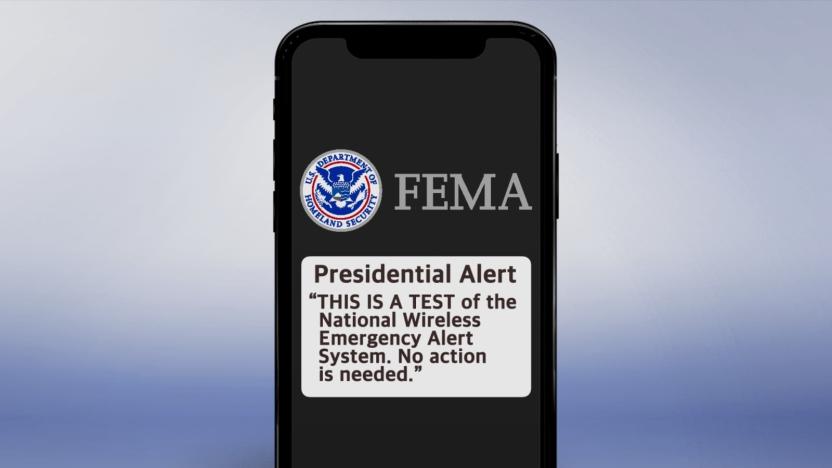Presidential alerts
Latest

FEMA's presidential alerts are an easy target for spoofing attacks
Last fall, FEMA conducted the first nationwide test of its Wireless Emergency Alert (WEA) system when it beamed a "presidential alert" to all capable phones in the US. WEA has long been used to send alerts about missing children, natural disasters and other dangerous events. But a few years ago, the FCC voted to expand WEA so that, among other changes, government officials could write longer messages. Now, researchers from the University of Colorado Boulder warn that WEA's presidential alerts can be easily spoofed.

FEMA and National Weather Service launch Wireless Emergency Alert System
While it's a little later than expected, the free SMS emergency notification system has now gone live. Wireless Emergency Alert (WEA) messages will be delivered to cell towers in affected areas, which will then broadcast them to all compatible devices in their range. While the system is looking to cover over 97 percent of the country, it's being gradually rolled out across carriers. Sprint and Verizon are both apparently ready for action and while we haven't heard about the status of T-Mobile or AT&T, the National Weather Service has stated that hundreds of smaller carriers haven't yet enabled the broadcasts. However, not all phones -- especially the more elderly bricks still in circulation -- will work with the system. To check whether your weighty cellular still passes muster, hit up the compatible device list at the CTIA link below.

Wireless Emergency Alert system goes live this month, delivers location-based SMS warnings
Last we heard of the federal government's Wireless Emergency Alert system, only Sprint had signed on to deliver the SMS warnings. Now, with the secured participation of all four major carriers and smaller regional operators, that gratis service is set to go live this month, covering nearly 97 percent of active mobile users. Using a "point-to-multipoint system" that targets at-risk subscribers, the National Weather Service, FEMA, FCC and Department of Homeland Security-backed initiative works by sending location-based messages of 90 characters or less to nearby handsets in the event of an imminent meteorological threat. The mostly opt-out service will also accommodate AMBER and Presidential alerts, although you won't have that flexibility for missives sent from our head of state. So, the next time your phone gives off a strange auditory tone, you'll know to head for shelter.


